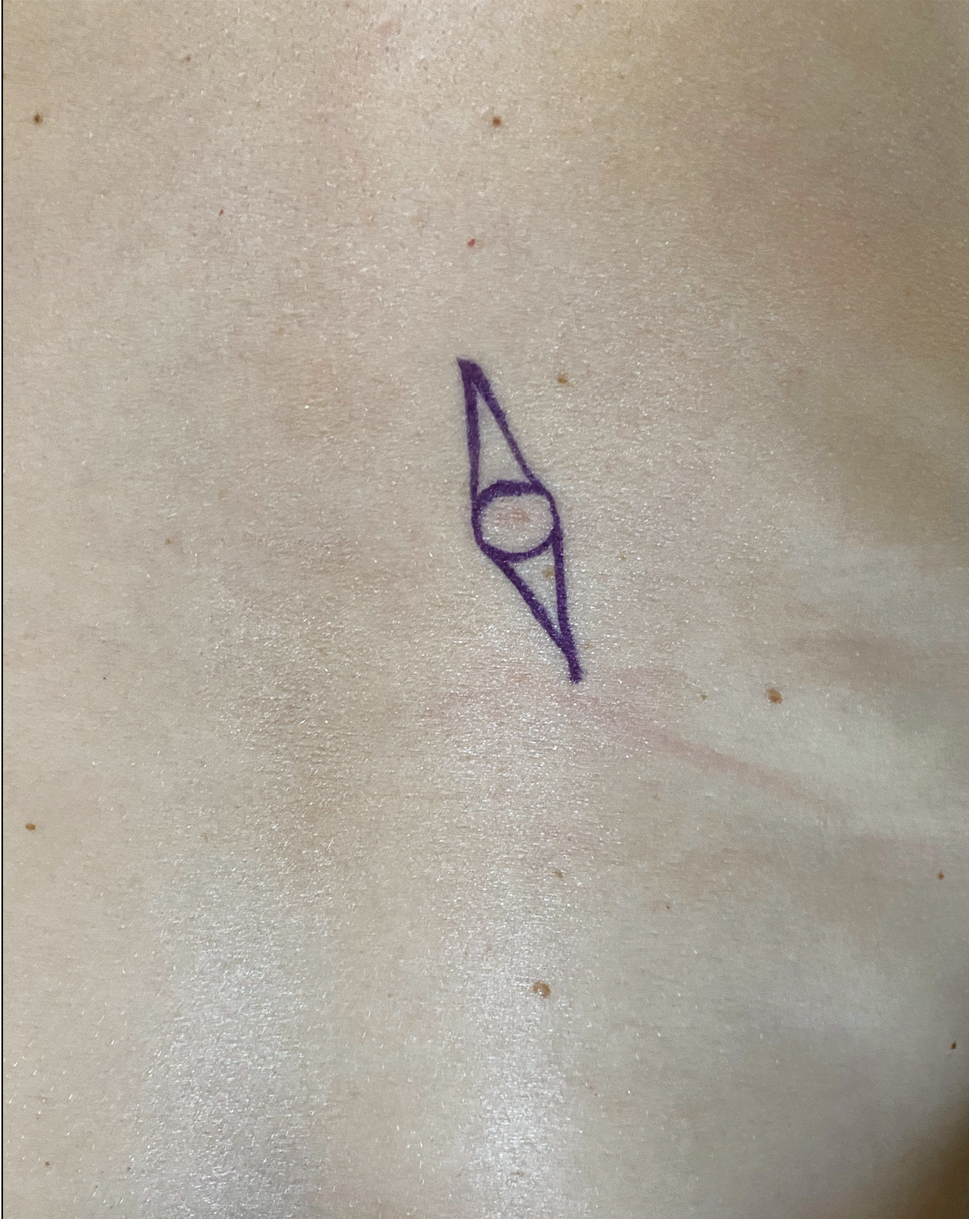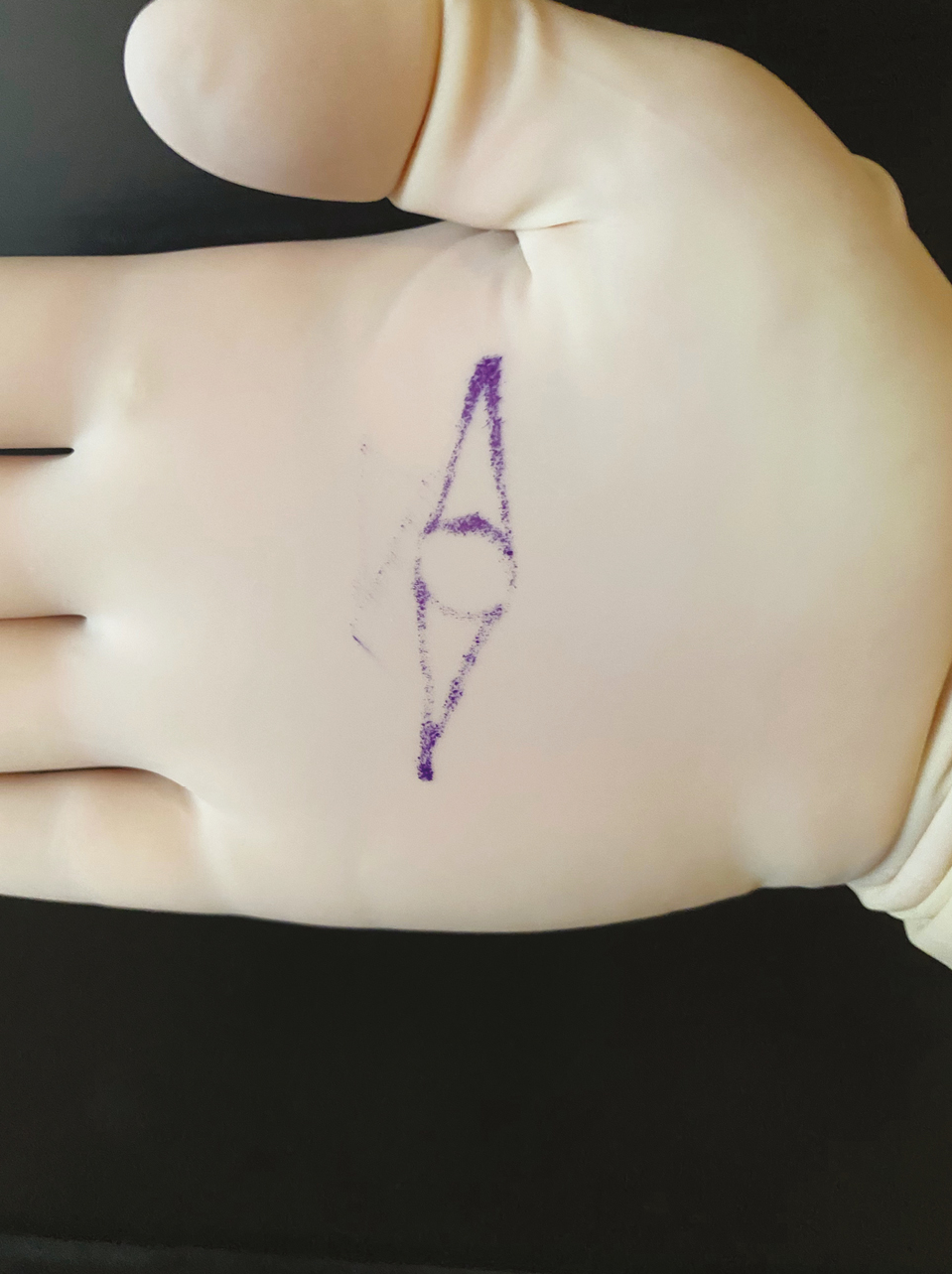Translate this page into:
Utilizing a Marked Exam Glove to Accurately Display Excision Size and Scar Length to Patients
Address for correspondence: Dr. Brett C. Neill, Division of Dermatology, University of Kansas Medical Center, 3901 Rainbow Blvd, Kansas City, Kansas 66160. E-mail: bcneill6@gmail.com
This is an open access journal, and articles are distributed under the terms of the Creative Commons Attribution-NonCommercial-ShareAlike 4.0 License, which allows others to remix, tweak, and build upon the work non-commercially, as long as appropriate credit is given and the new creations are licensed under the identical terms.
This article was originally published by Wolters Kluwer - Medknow and was migrated to Scientific Scholar after the change of Publisher.
Keywords
Dermatologic surgery
ellipse
fusiform
patient education
patient explanation
patient satisfaction
patient understanding
scar expectations
Patients often anticipate their scars to be less than half as long as the actual postoperative scar.[1] Preoperative consultations have been largely unsuccessful at improving the accuracy of patient expectations for scar length and appearance.[1] Preoperative visual aids may improve patient expectations.[2] Furthermore, accurately setting preoperative expectations may be particularly difficult when operating on anatomic sites that are not easily viewable by the patient, such as the posterior neck, back and posterior legs. Therefore, it is essential to develop effective strategies aimed at improving preoperative education to our patients.
In our clinic, we utilize a quick and effective preoperative visual aid that allows patients to visualize the expected excision size when undergoing fusiform excisions with primary closures. After drawing out the excision with a surgical marker [Figure 1], the surgeon may firmly place his or her gloved hand onto the inked drawing thereby transferring the drawing onto the exam glove [Figure 2]. The surgeon may subsequently show the patient the image on the glove which provides a visual aid demonstrating the accurate size and shape of the excision to the patient, and it is explained that the scar size will extend the length of the ellipse. We find this visual aid to be effective and use it routinely when operating on anatomic sites that are not easily viewable by the patient, particularly sites that are difficult to see with a mirror, such as the posterior neck, back or posterior legs. Using a digital image to explain the incision is also a very useful alternative visual aid, but it is more time-intensive to pull up a HIPAA-compliant image on a secure electronic medical record.

- Patient’s back with planned excision drawn with surgical marker

- Image of planned excision transposed to exam glove
Practices Points:
Patients often perceive their scars to be less than half as long as the actual postoperative scar.
Preoperative visual aids may improve patient expectations for scar length and appearance.
Patients are unable to see the marked excision size when operating on difficult to see anatomic locations such as the back or posterior leg.
A marked exam glove is a quick and efficient visual aid that demonstrates the accurate size and shape of the excision to the patient.
Financial support and sponsorship
Nil.
Conflicts of interest
There are no conflicts of interest.
REFERENCES
- A preoperative visual aid to improve patient expectations for postoperative scar length. J Am Acad Dermatol
- [Google Scholar]
- A preoperative visual aid to improve patient expectations for postoperative scar length. J Am Acad Dermatol 2021 doi: 10.1016/j.jaad.2021.02.053
- [Google Scholar]






